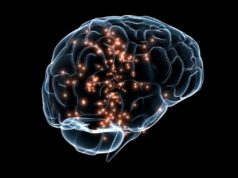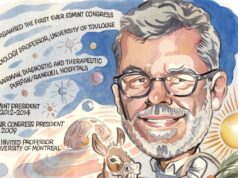Neuralstem has reported positive clinical outcomes for Neuralstem’s NSI-566 spinal cord-derived neural stem cell line in a rat model of ischaemic stroke. Data has shown significant improvement in both motor and neurological tests in the stem cell-treated rats.
Data were presented in a poster titled: “Histopathological assessment of adult ischemic rat brains after 4 weeks of intracerebral transplantation of NSI-566RSC cell line,” at the Society for Neurosciences Annual Meeting (New Orleans, USA, 13–17 October 2012).
The study was led by Cesar Borlongan, director at the Center of Excellence for Aging and Brain Repair at the University of South Florida College of Medicine, USA. Post-mortem histology was conducted in collaboration with Neuralstem.
Rats that suffered ischaemic stroke by middle cerebral artery occlusion were transplanted seven days post-stroke with increasing doses of NSI-566 into the stroke area. The animals were followed for safety and behavioral response for 56 days post-transplantation.
Researchers reported that there was significant improvement in both motor and neurological tests in the stem cell-treated rats. There were significant dose-dependent differences in the behavioral improvement across treatment groups at post-transplantation periods, with the highest dose showing the most significant improvement in both motor and neurological tests.
Similarly, there were significant differences in the behavioral performance among treatment groups at post-transplantation periods, with the most significant improvement in both motor and neurological tests seen at day 56 post-transplantation.
“This study was designed to evaluate the potential therapeutic value of intracerbral dosing of human neural stem cells (NSI-566) in an animal model of adult ischaemic stroke,” said Borlongan. “The results are very clear. The recovery of motor and neurological tests demonstrated by high-dose transplanted stroke animals was significantly better throughout the 56-day study period compared to vehicle-infused stroke animals, or low-dosed animals. In addition, there was stable improvement in the high-dose animals, and they showed a trend of better improvement over time.”
A separate poster, “Survival and differentiation of human neural stem cells (NSI-566RSC) after grafting into ischemia-injured porcine brain,” was also presented. The study was independently led by Martin Marsala, professor and the head of the Neuroregeneration Laboratory at University of California San Diego and also a member of the Sanford Consortium for Regenerative Medicine.
In this study, the same stem cells were transplanted into the brains of pigs that received an ischaemic stroke on one side of the brain. Eight/ nine weeks after the ischaemic event, which models chronic stroke in humans, feasibility and safety of escalating cell doses and injections were assessed. Body temperature, behavior, muscle tone and coordination, sensory function, food consumption, defecation, and micturition were monitored at least twice daily for the first seven days, and once weekly thereafter, until termination. At six weeks post-transplantation, there were no complications from the cell transplantation method or the cells. All animals recovered and showed progressive improvement with no distinction. All treated animals showed effective engraftment and neuronal maturation with extensive axonal projections. These data support the application of NSI-566RSC cell line to be transplanted into a chronic stage of previously ischemia-injured brain for treatment of motor deficits resulting from stroke.
“Our study was designed to evaluate the potential value of Neuralstem’s cells in a chronic model of ischaemic stroke and in a species that allowed for the use of human scale transplantation tools and dosing,” said Marsala. “We have demonstrated clearly that both the route of administration and the cells are safe and well tolerated and that the cells survived and “ifferentiated into mature neurons in the host brain tissue.”
“We have demonstrated safety and efficacy of NSI-566RSC in a subacute model of ischaemic stroke in rats and feasibility and safety in a chronic model of ischaemic stroke in mini-pigs,” said Karl Johe, chairman of Neuralstem’s Board of directors and chief scientific officer. “Together, these two studies demonstrate strong proof of principle data that our NSI-566 cells are ready to go into humans to treat paralysis in stroke patients.”
Neuralstem has recently completed a phase I trial testing the safety of NSI-566 in the treatment of amyotrophic lateral sclerosis (ALS or Lou Gehrig’s disease) and has been approved to initiate a human clinical trial in ischaemic stroke in China, through its subsidiary, Suzhou Neuralstem.













